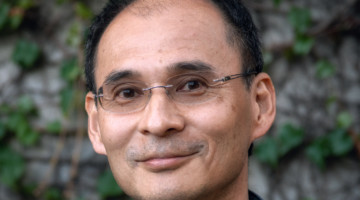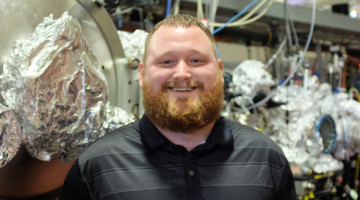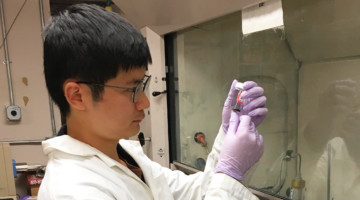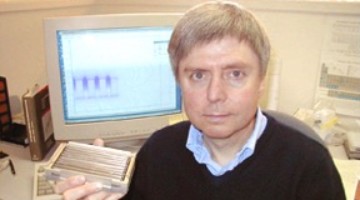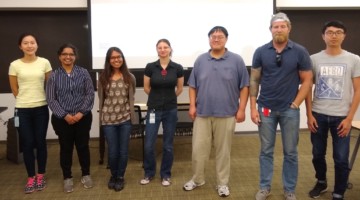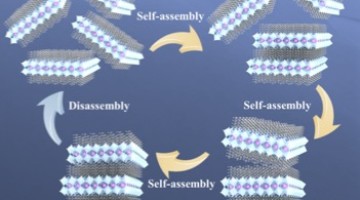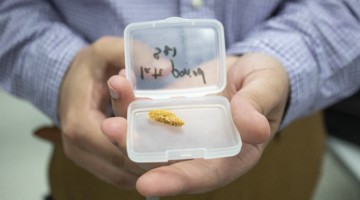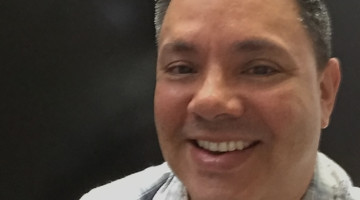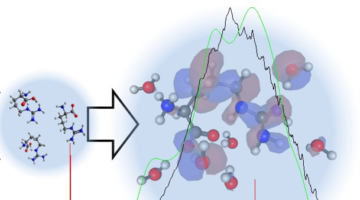Nobumichi Tamura received the 2019 Klaus Halbach Award in recognition for the software he developed to analyze microdiffraction data. The first version of the software was completed just before Christmas 1999 and has been a gift for many in the community ever since. Read more »
Terry McAfee, Resonant Soft X-Ray Scattering Postdoc
Terry McAfee started coming to the ALS during his PhD. The Northern California native is glad to be back as a postdoc and hopes to stay on as a beamline scientist. He enjoys developing new techniques and working with users, always looking for ways to contribute to the community. Read more »
ALS Confirms Mechanism for Improved Fuel Cell Catalysis
Aided by x-ray absorption spectroscopy at the ALS, researchers from Toyota and the University of Akron have uncovered a new catalysis mechanism to improve oxidation-reduction reactions in certain fuel cells by 40%. This enhancement, based on tin oxide, will support efforts to increase fuel efficiency in electric vehicles. Read more »![]()
In Memoriam: Dave Humphries, Staff Engineer
We are saddened by the death of our friend and colleague, Dave Humphries. During his long tenure at Berkeley Lab and at the ALS in particular, Dave contributed in many outstanding ways to the success of the Laboratory and of our facility. Dave was at home with his family and passed away peacefully on September 13, 2019. Read more »
Doctoral Fellows in Residence Wrap Up Year at the ALS
After spending a year at the ALS, our doctoral fellows in residence are preparing to return to their home institutions. Before leaving, they gave lightning talks on the work they did at the beamlines and what else they did in the Bay Area. Read more »
Self-Assembling Nanomaterials Are Organized and Tunable
Perovskite superlattices have a wide variety of applications, but they are difficult to synthesize. Researchers have now characterized their self-assembly process to better understand how to create a variety of superlattice materials. Read more »
LAAAMP Brings International Researchers to the Advanced Light Source
This summer, the ALS hosted researchers from Mexico and Egypt as part of LAAAMP—Lightsources for Africa, the Americas, Asia and Middle East Project. Their studies on solar cells and mummy bones exemplify the benefit of increasing access to synchrotron-enabled research. Read more »
Curtis Gomez, Electrical Safety Officer
Curtis Gomez recently became the ALS electrical safety officer. Besides looking out for hazards, his work in motor controls coordination draws from a TV and radio background—and working for a local band that made it big. Read more »
ALS in the News (August 2019)
- New antibiotic approved for drug-resistant tuberculosis
- Mechanism of electrical signaling in cells revealed
- Carnegie Mellon’s Jyoti Katoch receives DOE early career grant to probe quantum matter
- David Prendergast appointed interim director of the Molecular Foundry
- Particle Accelerators Drive Decades of Discoveries at Berkeley Lab and Beyond
Fundamental Property of Arginine Revealed Through Solvation
Just 20 amino acids act as building blocks for all our proteins, but their chemical properties have been difficult to study at the most fundamental level. Combining experiments and theory at the ALS, researchers have now determined the ionization energy of arginine, an amino acid with over 100 isomers. Read more »
- « Previous Page
- 1
- …
- 20
- 21
- 22
- 23
- 24
- …
- 28
- Next Page »
